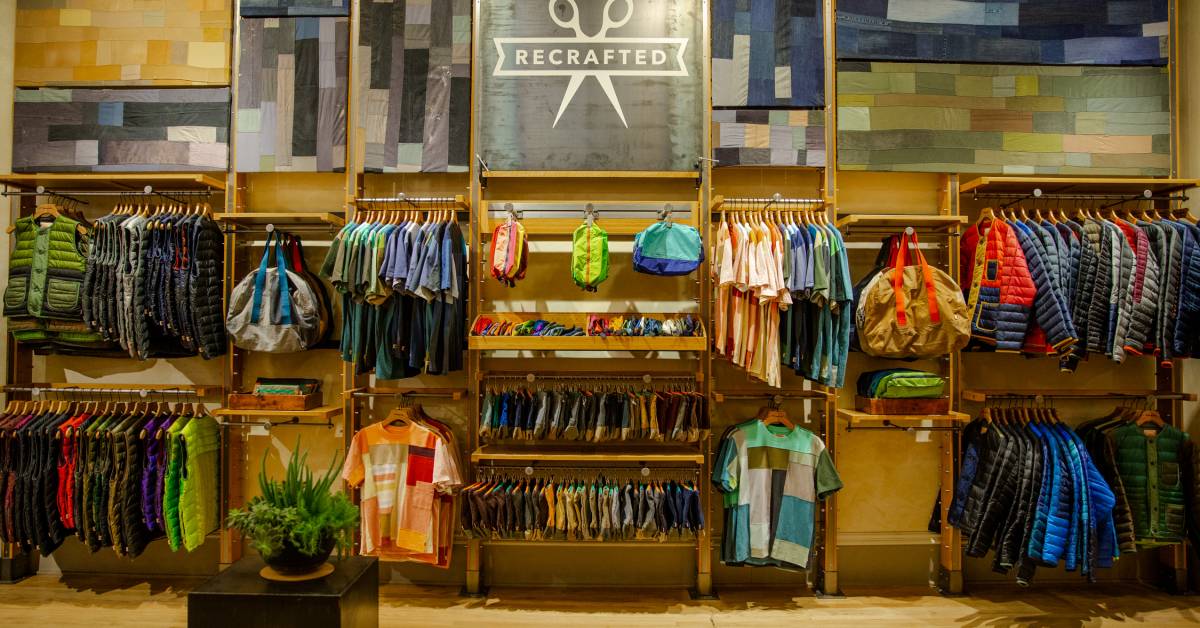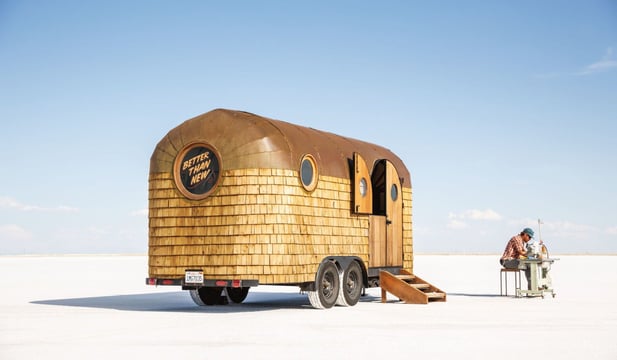Visual Merchandising: 5 Key Tips to Master the Art of Second-Hand

Visual Merchandising: 5 Key Tips to Master the Art of Second-Hand
Second-hand racks among current collections? I'm encountering them more and more on my shopping excursions.
Propelled by the power of the internet, second-hand fashion emerges as a creative and responsible answer to the prevailing ecological emergency. Far from being just an economical alternative, it now asserts itself as a marketing and industrial imperative for brands. Proof of this is Isabel Marant reporting that two-thirds of its second-hand buyers are new direct clients, perfectly illustrating the market's potential to attract new clientele while making a positive impact on the planet.
Now, in many stores, customers drop off their used items in shops that then display them harmoniously. This task is not easy when formats, colors, seasons, collections are entirely random. At the heart of this dynamic, the role of the Visual Merchandiser becomes crucial to transcend the "clearance space" effect and help in the valuation of this increasingly indispensable hybrid zone.
What are the best practices for getting started in circular fashion? How to create attractive planograms by combining products from different collections and seasons? Here, I attempt to give you some keys to get started.
EVENT CORNERS TO MASTER ONE'S IMAGE AND TEST THE CONCEPT
Event corners and pop-up stores prove to be perfect innovation labs for retail teams. They allow testing the concept and adjusting it for a successful territorial launch.
Often, the corner is modeled in advance with fictitious articles. The Visual Merchandiser benefits from perfect stock control and can therefore select the products to achieve the ideal rendering. Working "by color" is generally favored for a premium effect. It is then enough to order the percentage of sweaters or trousers needed to achieve the desired result.
 Planogramme Petit Bateau
Planogramme Petit Bateau
3D MODELING TO VISUALIZE SPACES AND BETTER SELL THE PROJECT INTERNALLY
A good practice: 3D modeling on a Merchandising platform like IWD. Such a platform proves to be a true ally in visualizing spaces and their overall rendering. They allow teams to create a detailed mass plan with a zoning of the store, and within each zone, the visual merchandiser can work on the color, product typology, or size. Although fictitious, the articles serve to estimate the necessary quantities based on the furniture. These 3D modeled planograms then serve as recommendations for the store teams. They lay the foundation for rules and tools suited to more fluctuating stock management.
DEPLOYING THE PROJECT IN-STORE: AN INVOLVED TEAM AND DYNAMIC ADJUSTMENT OF TIMING AND ZONING
A brand has a lot to convey throughout the year in just a few square meters. It's essential to understand that the Second-Hand space will take the place of another space or another communication campaign. Thus, the brand Jacadi offers its second life offer online throughout the year, and event-wise in some of its stores. This allows it to have perfect control of the marketing timing.
Second-hand can be an excellent boost in certain regions or stores and less so in others. Its success depends as much on strategic targeting as on the team's conviction on the ground. An engaged team believing in the added value of Circular Fashion can significantly influence performance.
Regarding Zoning, it must find its place. Do not hesitate to position it in different places in the store to find the best location. In some of its stores, Petit Bateau places its second-hand corner at the front of the store for an image operation, while in others, it will be located at the back.
Finally, optimizing stock management represents a major challenge in the effective deployment of these spaces. The disparity is significant between the guidelines sent and what happens in the store in often reduced space. It seems unthinkable to make precise guidelines because the stock is extremely random. Operating in plan mass mode, with global instructions, seems to be the best solution.
THE IMPORTANCE OF SPACE AND A STRONG VISUAL IDENTITY
Whether at the front or the back of the store, the objective and challenge are for the customer to identify the second-hand space at a glance. A well-ventilated space, benefiting from very specific decorative elements, allows the visitor to instantly understand that they are entering a truly different universe. This requires space and a distinct visual identity.
To achieve a "wow" effect, prioritizing large surfaces is ideal. Factory stores, for example, offer this opportunity by allowing an item to be displayed over several linear meters. This deployment promotes a presentation where the color and design of the pieces become major visual appeal assets, thus transforming the sales space into a true experience for the consumer.
DIGITAL: A PILLAR AND A GREAT ALLY
No matter the chosen channel, the important thing is to contribute, to one's measure, to saving our planet. But it is undeniable that digital is a pillar for brands committed to the path of sustainability and a great ally of the store. Patagonia, at the forefront of this revolution, perfectly illustrates this movement. The brand has managed to create a synergy between online resale and the in-store experience.
Through its online Worn Wear platform, Patagonia skillfully exploits the potential of digital and invites everyone to breathe new life into their clothing. Concurrently, the brand has also launched an itinerant repair service, a true mobile clothing clinic, traveling across Europe to offer free repairs of clothes, regardless of their brand. By combining the easy and global access offered by the internet with a physical and local commitment through its repair workshops, Patagonia forges an indissoluble link with the consumer.

CONCLUSION
- Excellence in second-hand Visual Merchandising requires a dynamic and constantly evolving approach. It's about telling a story of sustainability, using captivating visual techniques and innovative strategies such as:
- Adopting 3D modeling to preview and plan the layout of sales spaces.
- Creating pop-ups or corners to then develop a detailed mass plan that will serve as a recommendation
- Leveraging the web as a strategic tool to strengthen the presence of second-hand spaces. - - Creating a distinct visual identity to clearly distinguish these zones in the stores.
- Dynamically and regularly adjusting presentations and zoning in the store.
- Involving and training store teams so they become ambassadors of the second-hand initiative. - You now have some tools to make the leap into the second-hand market. Good luck!
📸 Couverture: Patagonia
Follow IWD on Facebook, LinkedIn, and Instagram or subscribe to our newsletter.
MORE ARTICLES BY THIS AUTHOR

Caroline
I am a Brand Image leader working in Retail and tech passionate about 360° storytelling. I'm also keen on travel and wildlife. I have a strong experience in building and implementing communications strategies (consumer, corporate, BtoB, social media) consistent with marketing levers and business needs. I have always been working in fast-paced environments and have experienced early days of companies that have known tremendous growth.




